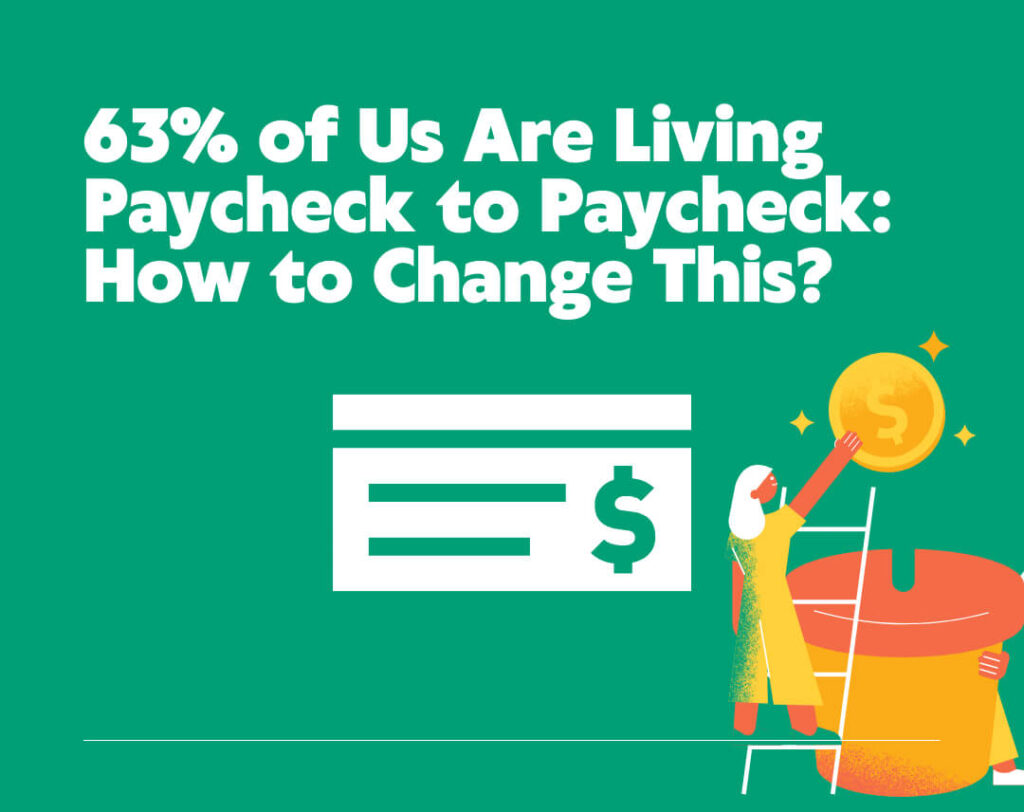A staggering 63% of Americans live paycheck to paycheck, struggling to make ends meet. We know it’s difficult, but change is possible.
This article shares valuable tips and reliable advice to help break the cycle. Let’s work together to improve your financial situation!
Understanding Your Financial Situation
To change effectively, you must first know your monitory flow. Understand your income, expenses, savings, and debts like a master. Here’s how.
Know Your Income
- Gather your pay stubs.
- Add up side gig earnings.
- Include supplementary or irregular income.
Assess Your Expenses
- Use free budgeting apps to track spending.
- Categorize your spending (e.g., housing, transportation, food, entertainment).
- Determine fixed and variable expenses.
Identify Debts
- Gather account statements for loans and credit cards.
- Determine the total amount and interest rates.
Check Your Savings
- Look at your bank accounts.
- Add up retirement or investment accounts.
Key Takeaway: In order to effectively manage your finances and stop living from paycheck to paycheck, a deep understanding of your financial situation is crucial. This involves knowing your income sources, assessing your expenses using budgeting tools, identifying your debts along with their interest rates, and checking your savings through various accounts.

Creating a Realistic Budget
Creating a realistic budget, no doubt, is a vital step to regain control over your finances. Budgeting helps you understand your income versus expenses and gives you the power to decide where your money should go. Let’s break it down and make the process:
The Efficiency of the 50/30/20 Rule
Ever heard of the 50/30/20 rule? This rule is a go-to strategy for efficient budgeting! It simplifies how you view your money by segmenting your expenses into three clear groups: needs, wants, and payments toward savings or debt.
- Needs (50%): Your most critical expenses fall under this category. These are payments you must make to survive. From buying groceries to paying for your house or apartment, utilities, and health care, these are necessary costs.
- Wants (30%): This part of your budget allows for personal pleasure. It’s all about the non-essential elements that make life a bit more enjoyable, such as dining out, taking trips, and treating yourself to entertainment.
- Savings or Debt Repayments (20%): This portion ensures you’re building a foundation for a secure financial future. Whether it’s saving for a rainy day or chipping away at your debt, this is where 20% of your budget goes.
Categorizing Spending
To apply the 50/30/20 rule effectively, you need to categorize your spending properly. Break down your expenses into three categories: needs, wants, and savings or debt payments. This way, you can easily view where your money is going and pinpoint areas for change.
Key Takeaway: The 50/30/20 rule is an effective budgeting tool that helps you divide your expenses into needs, wants, and savings or debt payments. To apply the method with accuracy, categorizing your spending is essential. This will help you identify areas where you can make changes to get the most out of your financial situation.
Tracking Progress
A budget isn’t a one-time task. It’s a dynamic plan that needs regular reviewing and updating to fit your current situation. As income or expenses fluctuate, adjust your budget to reflect these changes. This will keep your budget realistic and manageable.

Increasing Your Income
Boosting your income can make a big difference for your financial health. To lessen the financial burden, consider adding supplementary income sources. Here are some great options to think about:
Freelance/Side Jobs
Many opportunities await talented individuals looking for side hustles. Some ideas for freelance jobs include:
- Online Tutoring: Share your knowledge and help others learn new subjects. Popular online tutoring platforms on the internet are many.
- Freelance Writing or Graphic Design: Use your writing or design skills to create content for clients.
- Rideshare Driving: Help people get around town with services like Uber or Lyft. Over 1 million drivers earn income this way.
Passive Income
Passive income sources can help you earn money even when you’re not working. Some popular passive income ideas are:
- Rental Properties: Have you ever thought about being a landlord? Investing in real estate and renting it out can be a stable passive income.
- Dividend-producing Stocks: A smart way to make your money work for you is by purchasing stocks from companies that distribute dividends.
- Start a Scalable Side Business: This involves creating a business that can grow without requiring much of your time. Examples could be e-commerce shops or blogs. These platforms bring profits through how they display ads, work with affiliates, or sell products.
Key Takeaway: Tracking progress and adjusting your budget regularly is a must to make the most out of your financial situation. It’s also important to consider adding supplementary income sources like freelancing, passive income, or starting a scalable side business. This can help bring in additional funds that are necessary for reaching your long-term goals.
Read More: How to Generate Multiple Sources of Income
Final Thoughts
Breaking free from the paycheck-to-paycheck cycle is achievable. Follow these practical guidelines to transform your financial life. Begin today, and one day soon, you’ll experience financial freedom.





